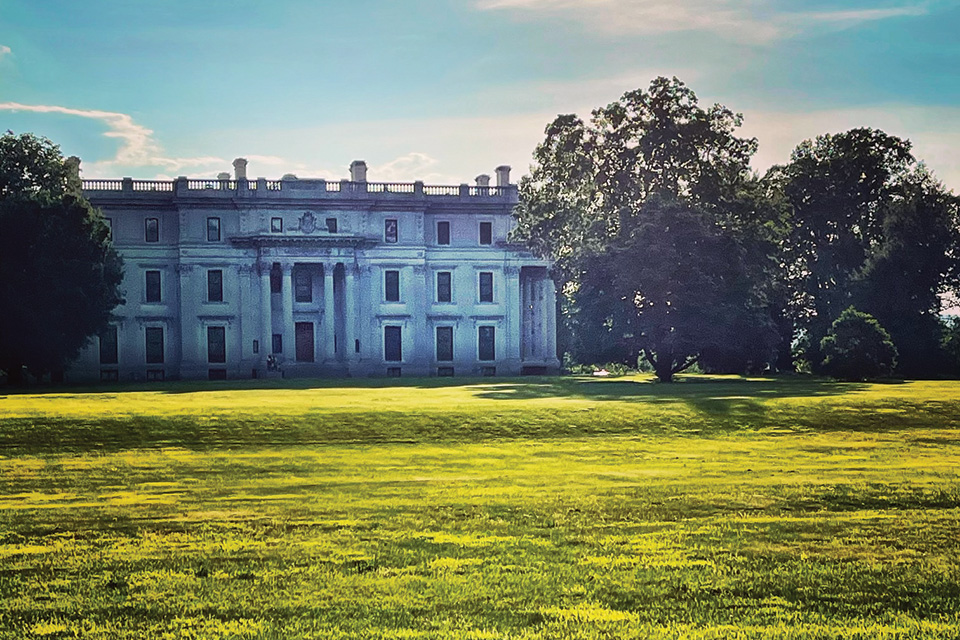Hyde Park’s historic Vanderbilt Mansion is a majestic, must-see experience.
By Renee Jermaine
A biographer once described businessman Frederick Vanderbilt as “a thoroughly good fellow, entirely devoid of any snobbishness or nonsense.” True, by all accounts, the grandson of famed shipping and railroad magnate Cornelius “Commodore” Vanderbilt was modest, generous and publicity-shy. But let’s face it: he was a Vanderbilt, a member of the richest and most powerful dynasty in late 1800s America—with a fabulous lifestyle to back it up. Vanderbilt owned multiple yachts, hobnobbed with fellow bluebloods of the day, gave piles of money to Yale University and other lofty institutions—and in 1895, along with his wife Louise, commissioned the design of the ultimate exemplar of wealth, the Vanderbilt Mansion (or “Hyde Park” as it was then known named for the town its located in), a Gilded Age country palace.
Situated on a bluff with killer sunsets that overlook the Hudson River and Catskill Mountains, the Beaux-Arts mansion is the expansive estate to which the Vanderbilts repaired (with the aid of 18 servants) in the
spring and summer months, when not yachting or hanging out in their Manhattan digs (or, for that matter, one of their pads in Newport, Bar Harbor and the Adirondacks).
If you’re in any way curious about the history, architecture, décor, art or social mores of early 20th century elites, there’s not a more beautiful spot in our neck of the woods to catch an insider’s glimpse. Set on hundreds of acres, the mansion’s 50-plus rooms have been left, since the Vanderbilts’ heyday, in impeccably preserved condition, its fittings and furnishings.
Visiting the grounds and gardens of Vanderbilt Mansion is free and it’s an ideal day trip, particularly in the warmer months. You can wander the lovely gardens, take in the famed collections of native and exotic trees, picnic at Bard Rock (to-die-for views) or hike one of the numerous trails that dot the property. But a guided tour of the home in all its ostentatious splendor is the pièce de résistance here—and a bargain at $10 a pop (but book ahead—tickets sell out quickly). We dare you not to be blown away by the intricate ceilings and mouldings, gorgeous wood paneling, rich tapestries and abundant paintings and antiques from the 17th and 18th centuries.
After Vanderbilt’s death at Hyde Park in 1938, he bequeathed the estate to his wife’s niece, Margaret Van Alen who, for reasons difficult to fathom, had little interest in moving in. It might have been sold to the highest bidder were it not for her neighbor, Franklin Delano Roosevelt, who stepped in and persuaded Van Alen to donate the house and a sizable chunk of land to the federal government. Two years later—luckily for future day-trippers like us—Vanderbilt Mansion officially became a National Historic Site. And its majesty awaits your presence.












Comments are closed.